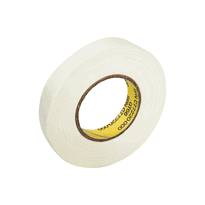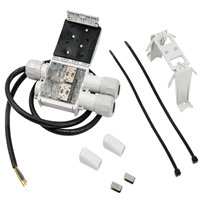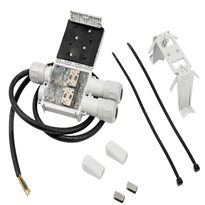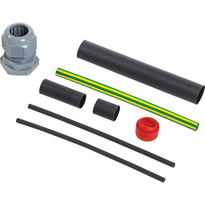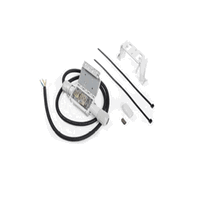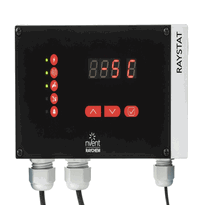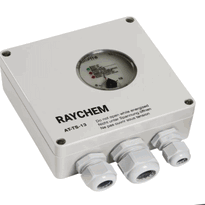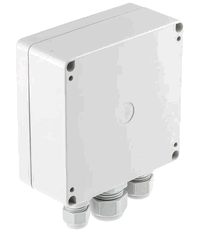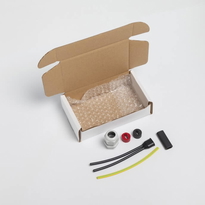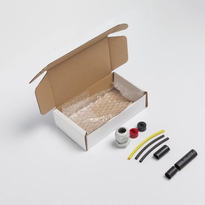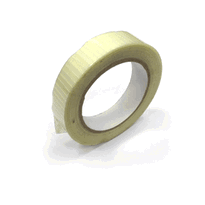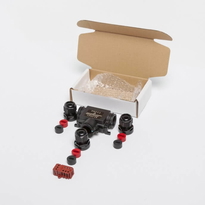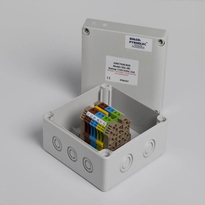Heat Tape for Water Lines
Heat tape for water pipes is an electrical device designed to prevent pipes from freezing by providing controlled, consistent or adaptive heat depending on environmental conditions. Self-regulating tapes adjust their heat output according to the surrounding temperature, ensuring efficient energy use, whereas constant-wattage tapes deliver a steady level of heat regardless of external factors.
Proper installation is crucial for optimal performance and safety. This involves securing the tape directly onto clean, dry pipes with appropriate spacing, avoiding overlaps that could cause overheating, and ensuring all electrical connections are safe, insulated, and compliant with relevant standards.
Regular maintenance, including inspections for damage or wear, as well as ensuring the system is insulated adequately, helps maintain reliability. Prompt repairs or replacements of faulty sections are essential to prevent potential hazards and ensure the system functions effectively throughout the colder months.
Taking these precautions will optimize the safety and efficiency of your heat tape system and help protect your water pipes during severe frosts.
Types and Features of Heat Tape for Water Lines
There are primarily two types of heat tape used to protect water pipes from freezing: self-regulating and constant-wattage models. Each type is designed with specific features to address different installation requirements and environmental conditions.
Self-regulating heat tapes automatically adjust their heat output according to the ambient temperature. They increase their heat when temperatures drop and reduce it when conditions are milder, which helps save energy and reduces the risk of overheating. Their ability to adapt to outside temperatures makes them a versatile choice for various climates. This feature makes them particularly suitable for varied or unpredictable weather patterns and for use on flexible pipes such as PEX.
Constant-wattage tapes, by contrast, supply a steady amount of heat regardless of the surrounding temperature. They're ideal for longer pipe runs or in regions subject to extremely cold weather, providing consistent protection against freezing.
Both types of heat tape are widely used in residential and industrial settings to prevent damage caused by frozen pipes. The choice between them depends on factors such as environmental conditions, energy efficiency needs, and the specific requirements of the project.
Proper selection ensures reliable and effective protection for water lines in cold climates.
Installation Best Practices for Water Line Heat Tape
Proper installation of water line heat tape is essential to ensure safety, efficiency, and long-term durability. Begin by thoroughly cleaning the pipe surface to remove moisture, dirt, or other foreign materials, as this improves heat transfer and helps prevent damage to the tape. Clean the surface to remove foreign material, ensuring no liquids are present, as liquids can impede heat transfer and damage certain tapes. Inspect any existing heat tape for signs of wear or damage; replace it if necessary, especially on plastic pipes that require thermostatically controlled tape. Select the appropriate length and wattage of the tape according to the pipe size and environmental conditions, following the manufacturer’s instructions. When securing the tape, apply it directly to the pipe. Position it on the underside of horizontal pipes or on the side facing the coldest air in vertical pipes. Use spaced intervals of electrical or application tape to ensure the heat tape is firmly fixed and maintains contact with the pipe. Use compatible fire-resistant materials to prevent potential hazards and improve safety. Maintain a safe distance from other electrical cables and any combustible materials to promote safe operation and prevent hazards. Properly installed heat tape will provide effective frost protection and reduce the risk of pipe freezing during colder months.
Safety Precautions and Electrical Requirements
To ensure safety and reliability when operating water line heat tapes, it's vital to follow specific electrical safety standards designed to reduce risks associated with moisture, heat, and electrical faults. These standards include the use of dedicated circuits, Residual Current Device (RCD) or Ground Fault Circuit Interrupter (GFCI) protection, and correct installation practices.
Heat tapes should be connected to their own circuits, typically protected by 13 or 16 amp breakers, to prevent overloads and prevent interference with other electrical devices. Dedicated circuits are essential for maintaining system performance and safety. It's essential to use only direct plug-in outlets; the use of extension cords is strictly prohibited due to fire hazards and potential safety risks.
Connecting heat tapes to GFCI-protected outlets is crucial for safety, especially in damp or outdoor environments. These devices will swiftly disconnect power in the event of a ground fault, significantly reducing the risk of electric shock.
Proper routing is essential: heat tapes must be laid out securely, avoiding crossing or overlapping. Additionally, ensuring the use of moisture-resistant insulation can help further minimize electrical hazards associated with damp conditions. They should also be positioned away from leaks, damage, or areas prone to moisture contact to minimize hazards and ensure consistent, safe operation.
Adhering to these electrical safety protocols not only helps protect your property but also ensures the effective and safe functioning of water line heat tapes throughout the UK.
Maintenance and Longevity Tips for Effective Use
Regular inspection and maintenance of water line heat tapes are vital to ensure their ongoing efficiency and safe performance throughout their lifespan. Proper preparation of surfaces, such as thoroughly cleaning pipes and checking for any damage, helps prevent common issues like poor adhesion or electrical shorts. Understanding the importance of maintenance helps extend the longevity of the heat tape and ensures optimal operation. Securing the heat tape at recommended intervals with electrical tape, while avoiding overlaps and the use of metal fasteners, reduces the risk of fire hazards. Additionally, inspecting connection points and control units regularly can prevent electrical failures. Selecting the correct type of heat tape is important—self-regulating options offer energy efficiency and safety, whereas constant wattage tapes are more suitable for metal pipes. After installation, covering the pipes with appropriate insulation and weatherproofing enhances heat retention, especially in exposed or vulnerable areas. Routine visual inspections should focus on detecting signs of wear, damage, or loose fittings, particularly before the colder months. Any damaged sections should be replaced immediately to maintain safety standards and performance. Furthermore, confirming proper electrical operation of the system helps prevent freezing issues and ensures continued protection during low temperatures. Using appropriate insulation around the heat tape can also contribute to improved efficiency and durability.
Conclusion
Choosing the correct heat tape and adhering to proper installation, safety, and maintenance procedures ensures dependable protection for water pipes during cold weather. Following the manufacturer’s instructions and complying with electrical standards help minimise risks and extend the lifespan of your equipment. Regular inspections and prompt repairs are essential for maintaining efficiency and preventing pipes from freezing or suffering damage. By following these guidelines, you can ensure a safe, effective, and long-lasting solution that preserves water supply functionality during frosty conditions, while also reducing potential hazards and operational costs.








